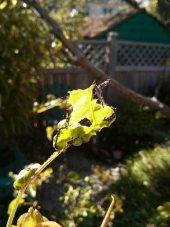




Medicinal herbs, kitchen herbs, perennial edibles and berries: https://mountainherbs.net/ grown in the Blue Mountains, Australia
 1
1




 2
2




 2
2




![Filename: edefb40feeff25491098c7561985cadf.jpg
Description: Indicator Plants [Thumbnail for edefb40feeff25491098c7561985cadf.jpg]](/t/70302/a/54310/edefb40feeff25491098c7561985cadf.jpg)





Angelika Maier wrote:OK in the olden days farmers did not move around and farmed the same piece of land for generations. These circumstances made it easier for them to read their soils without a lab.
I don't want to discuss the usefulness of soil test here (of course they are !), I want to gather methods to read the soil without a lab.
1. Say weeds which grow (we have a lot of buttercups and in the chicken run there is a lot of plantain which chicken don't like), what does the occurence of weeds tell us?
2. Crops which don't grow well (i.e. my beets don't get really big)
3. The tilth, structure.....
4. The geology of your place, were to find information and how to interpret it.
Which indicators are there for the lack or excess of certain nutrients?
List of Bryant RedHawk's Epic Soil Series Threads We love visitors, that's why we live in a secluded cabin deep in the woods. "Buzzard's Roost (Asnikiye Heca) Farm." Promoting permaculture to save our planet.
 1
1








Medicinal herbs, kitchen herbs, perennial edibles and berries: https://mountainherbs.net/ grown in the Blue Mountains, Australia
 1
1




 1
1




 1
1




Angelika Maier wrote:Interesting info! As my whole land is on fill I do create soil, which makes it even more difficult. That means for me personally the geology only matters as much as the material I bring in. If you build up the soil you will end up with patchy soils one different to the other. With the beets I know they need boron and I do 1/4 teaspoon on ten litres of water but it is a trace element and too much is dangerous.
I will make jkar tests I never did these.
I have some beds were chickweed grows like mad - is it too much nitrogen?




Medicinal herbs, kitchen herbs, perennial edibles and berries: https://mountainherbs.net/ grown in the Blue Mountains, Australia




Medicinal herbs, kitchen herbs, perennial edibles and berries: https://mountainherbs.net/ grown in the Blue Mountains, Australia

|
I'm so happy! And I wish to make this tiny ad happy too:
permaculture and gardener gifts (stocking stuffers?)
https://permies.com/wiki/permaculture-gifts-stocking-stuffers
|

